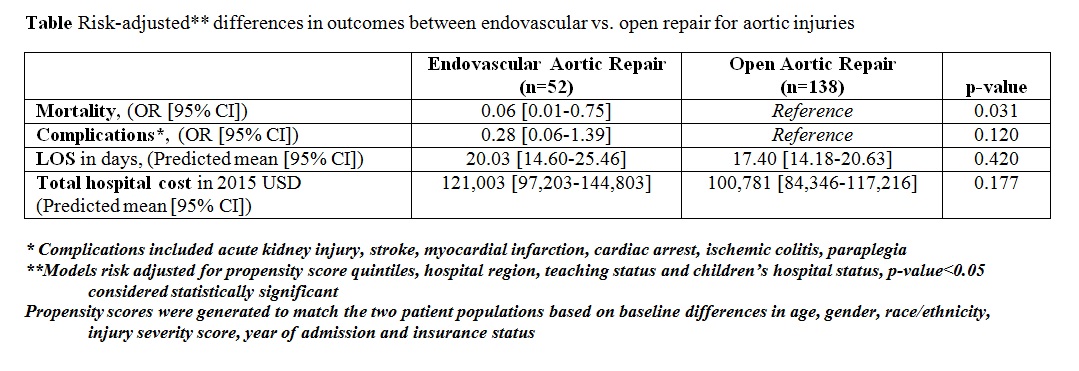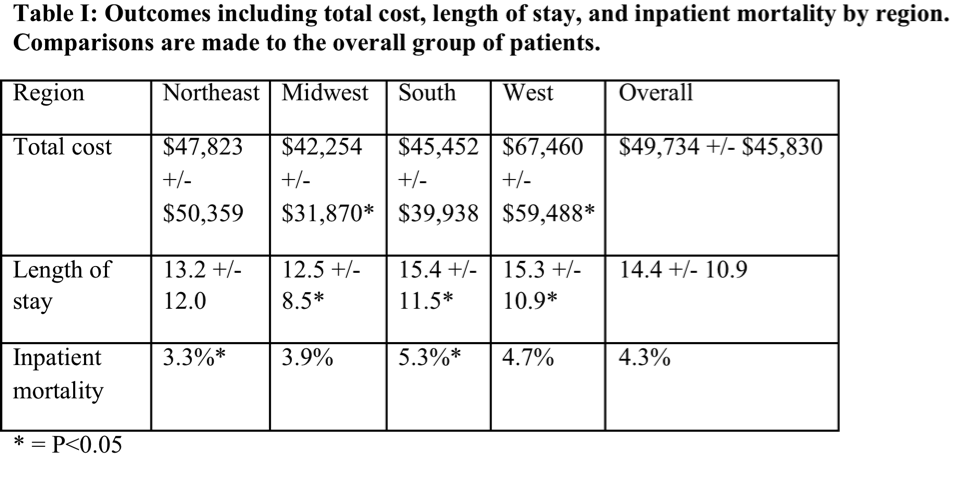M. C. Smith1, P. J. Chung1, Y. C. Constable2, A. E. Alfonso1, G. Sugiyama1 1SUNY Downstate Medical Center,Department Of Surgery,Brooklyn, NY, USA 2SUNY Downstate College Of Medicine,Brooklyn, NY, USA
Introduction: Although the incidence of human immunodeficiency virus (HIV) and acquired immune deficiency syndrome (AIDS) is decreasing, due to the effectiveness of antiretroviral therapy, the prevalence of HIV is increasing. As a result, patients are living longer and presenting with common surgical conditions such as acute appendicitis. Previous studies have examined single institution experiences, which have shown an increase in complications. We sought to investigate the effect of HIV and AIDS on postoperative outcomes in patients who undergo appendectomy.
Methods: We selected patients from the Nationwide Inpatient Sample between 2005 and 2012 who underwent either laparoscopic or open appendectomy for acute appendicitis. We excluded cases of interval appendectomy. We used ICD-9 codes to identify patients with HIV and AIDS, and to identify complications. Data on patient demographics, length of stay (LOS), total hospital charges, and mortality during admission were also extracted. Using multivariate logistic regression, we created statistical models that controlled for age, gender, race, insurance type, socioeconomic status, number of Elixhauser comorbidities, and presence of perforation.
Results: There were 821 patients with HIV, 422 patients with AIDS and 338,425 patients served as controls. On univariate analysis comparing patients with HIV to controls, mean LOS was higher (3.8 days vs 3.0 days, p<0.001) and mean total charge was higher ($33,350 vs $30,714, p<0.0001). Comparing patients with AIDS to controls, those with AIDS had higher mean LOS (5.0 days vs 3.0 days, p<0.001), higher mean total charge ($44,486 vs $30,704, p<0.0001), more mechanical complications (2.4% vs 0.6%, p<0.0001), and more postoperative complications (6.6% vs 3.1%, p<0.0001). Multivariate analysis showed that HIV status was not an independent risk factor for mortality or intraoperative and postoperative complications, but was associated with increased LOS (OR 1.12, 95% CI 1.08-1.17, p<0.0001). AIDS was an independent risk factor for postoperative infections (OR 2.10, 95% CI 1.37-3.21, p=0.0007), digestive complications (OR 1.57, 95% CI 1.01-2.43, p=0.046), increased LOS (OR 1.23, 95% CI 1.18-1.30, p<0.0001), and increased total charge (OR 1.18, 95% CI 1.11-1.26, p<0.0001).
Conclusion: In this large, retrospective analysis, we found that in patients with acute appendicitis who undergo appendectomy, HIV and AIDS were not observed to be independent risk factors for mortality. Though AIDS is an independent risk factor for an increased risk of postoperative infection and digestive complications, appendectomy is a safe procedure in this patient population. Further studies to investigate how to minimize these risks in the population with AIDS are warranted.



